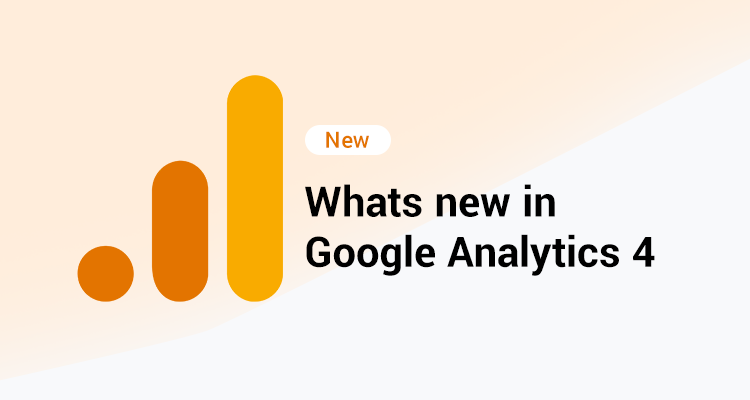What’s new in Google Analytics 4?

All the storming questions that revolve around your mind about what, where and what is happening in your website remained buried until Google Analytics came into the scenario. Using Google Analytics platform anyone could understand how a user behaves in a particular website.
As understanding customer behavior online is essential to clarify, rectify and enhance user experience to drive in more traffic. Universal Google Analytics has been used throughout by many business websites to discover errors and bring up their websites.
Well on Dec 2020, universal analytics go updated into Google Analytics 4 or GA4. The 4th version of Google Analytics helps to consolidate data in a single collection of reports from websites and mobile applications, enabling you to conduct cross-platform analysis.

The key features in Google Analytics 4 are:
- Smarter insights for identifying trends using machine learning.
- Customer-centric measurement of data.
- Better integration with Google Ads.
- More granular controls over data.
To get better return on investment (ROI) from marketing in the long term, Google created a new, more intelligent version of Google Analytics. Build with machine learning at its core, it provides meaningful insights and a complete understanding of your customer across devices and platforms.
What’s different in GA4?
The first thing you will notice is that there are no reporting views. Instead, it is simply a property that includes reports (called Data Streams) for all the data sources.
New GA4 properties:
Let’s look at the summary of the various reports and configuration options.
1. Home
This report helps you see the total number of users, events, revenue and conversions. User engagement patterns and other top-level information about your website and app can also be seen.
2. Real time
This report provides us with a world map understand of users present in the website or app at the moment. At the bottom of the report, the number of active users and other information are given. Explore individual users and their real-time interaction with your website and app using view Snapshot.
3. Acquisition:
It includes details about how people find your website. User Acquisition includes marketing channels to find your website. While traffic acquisition includes marketing channels related to each session.
4. Engagement:
It helps us understand details about pages viewed. It also shows the top-level metrics for the number of users in your website and app. Includes Regular Active Users (DAU), Weekly Monthly Users (WAU), and Monthly Active Users (MAU).
5. Monetization:
It tells about the value that you are creating on your website and app.
6. Retention:
Cohorts are included in this study, so you can see how frequently individuals return to your website.
7. Demographics:
The report contains information’s about their gender and age. Advertising cookies are used to evaluate some of these demographics.
8. Technology:
It provides information on the basis of how you track users.
Event reports:
1. Conversions:
The report helps you to see the amount of conversions on your website and app.
2. All events:
It includes all the events that occurred in Google Analytics.
Explorer report:
1. Analysis hub and template gallery:
Stores your custom reports for easy access, editing, copying, and sharing. We can also create new reports for exploration, funnel analysis, path analysis, segment overlap and more.
Report configuration:
1. Audiences:
You can create custom audiences to concentrate your research on particular user pages. You can set Membership length, users included or removed and more.
2. User reports and Debug view
Let you identify and collect information about members of your audience. Debug view can be used to debug your Android or IOS app
Property Configuration:
1. Property Settings:
It lets you edit the name of the property, default industry category and more.
2. Data Streams:
It allows you to link Firebase projects, view measurements and more.
3. Data Settings:
Allow you to choose data retention over a period of events. Default value is 2 months but can be changed.
4. Default Reporting Identity:
Allows you to monitor how users are identified. By default, a user ID and system ID combination are used.
For websites and mobile applications, the latest GA4 assets in Google Analytics provide robust reporting and analysis. There is various digital marketing training in Kochi available to open up the door of Google Analytics. With analytics, you could see the new possibilities of Digital marketing. To know more in depth there are various digital marketing training institute in Kochi or in other major locations to guide you. Connect and keep learning more!

